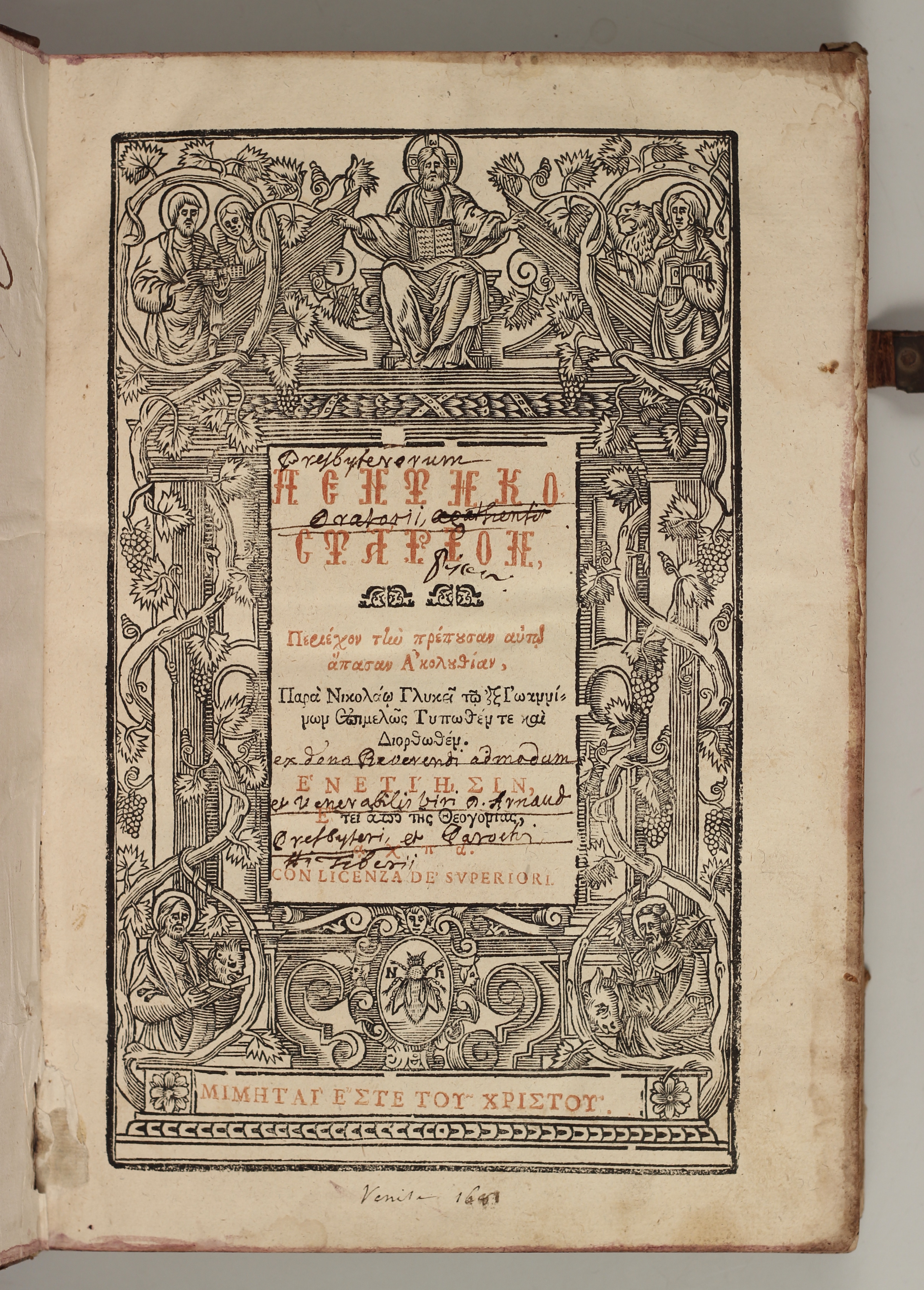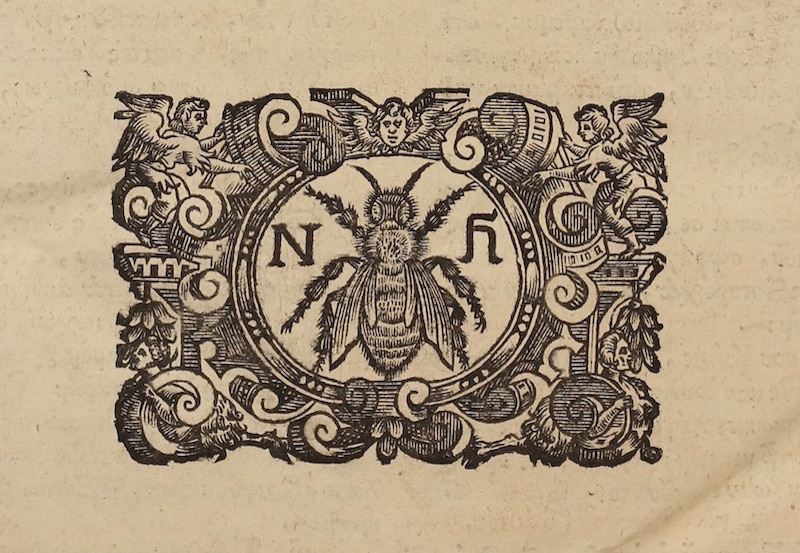Liturgy / Pentekostarion [sold]
Πεντηκοστάριον … — Venice 1681
Πεντηκοστάριον … — Παρὰ Νικολάῳ Γλυκεῖ τῷ ἐξ Ἰωαννίνων ἐπιμελῶς τυπωθέντε καὶ διοθωρτέν. Ἑνητίῃσιν, ἔτει ἀπὸ τῆς θεογονίας, απχα.
[Venice, Glykys, 1681].
Folio. A-P8 Q6: 252 pp. Printed in red and black. Pagination in Greek & Arabic.
Outer lower blank corner of E4 torn off, no loss. Some watermargins and spots. Tiny wormtrack in lower blank margin of I3-K6. Tear in upper blank margin of L3. Conjugate leaves O1 & O8, P1 & P8 toned.
Contemporary blindstamped calf over thin wooden boards, the upper one is broken below the leather. Two little stamps in gilt: the crucification on upper, Saint Mary on lower board. One clasp of two remaining, but not working.
Provenance: Presbyterorum Oratorii agathensis [Agde, South of France] ex dono Reverendi admodum et venerabilis viri P. Arnaud Presbyteri, et parochiae Sancti Tiberii [the parish Saint-Thibéry in Héraut, not far from Agde] on title.
Veloudis, Glikis, no. 43; Papadopoulos, Ελλενικη Βιβλιογραφια, 4721. This edition not in Legrand BH 17 nor in Staikos/Onassis nor in OPAC SBN.
Title-page woodcut, woodcut ornaments etc.: „The main feature of these woodcuts is their interchangeability. They seem to have formed a common fund of carved wood plates available to all Greek printers, from which the printers were supplied by borrowing, renting or reselling.“ (Veloudis, Glikis, p. 59) The title-woodcut of our edition shows Glykys‘ mark, the bee, and his initials in a little oval in the lower part of the woodcut. Other printers did use this woodcut putting their mark and initials in the oval.
Binding: „Venetian bookbinders were united in the guild of book printers and worked either in their own workshops or in a printing house. The Glikis printing house must also have employed a bookbinder at an early stage, although this is only attested later, for the year 1819. In any case, the main work of a bookbinder consisted of stitching the printed sheets. In addition, there was usually a poor binding of coarse, whitish-gray, raw cardboard [cartonato rustico, JD]… A firmer binding of thick cardboard or even leather must have been a rarity and was made to order, for example, for a higher cleric or for a wealthy customer or patron, as is sometimes attested for Glikis books, since in addition to the art of printing, the art of binding was unknown in the territories occupied by the Turks.“ (Valoudis p. 57).





